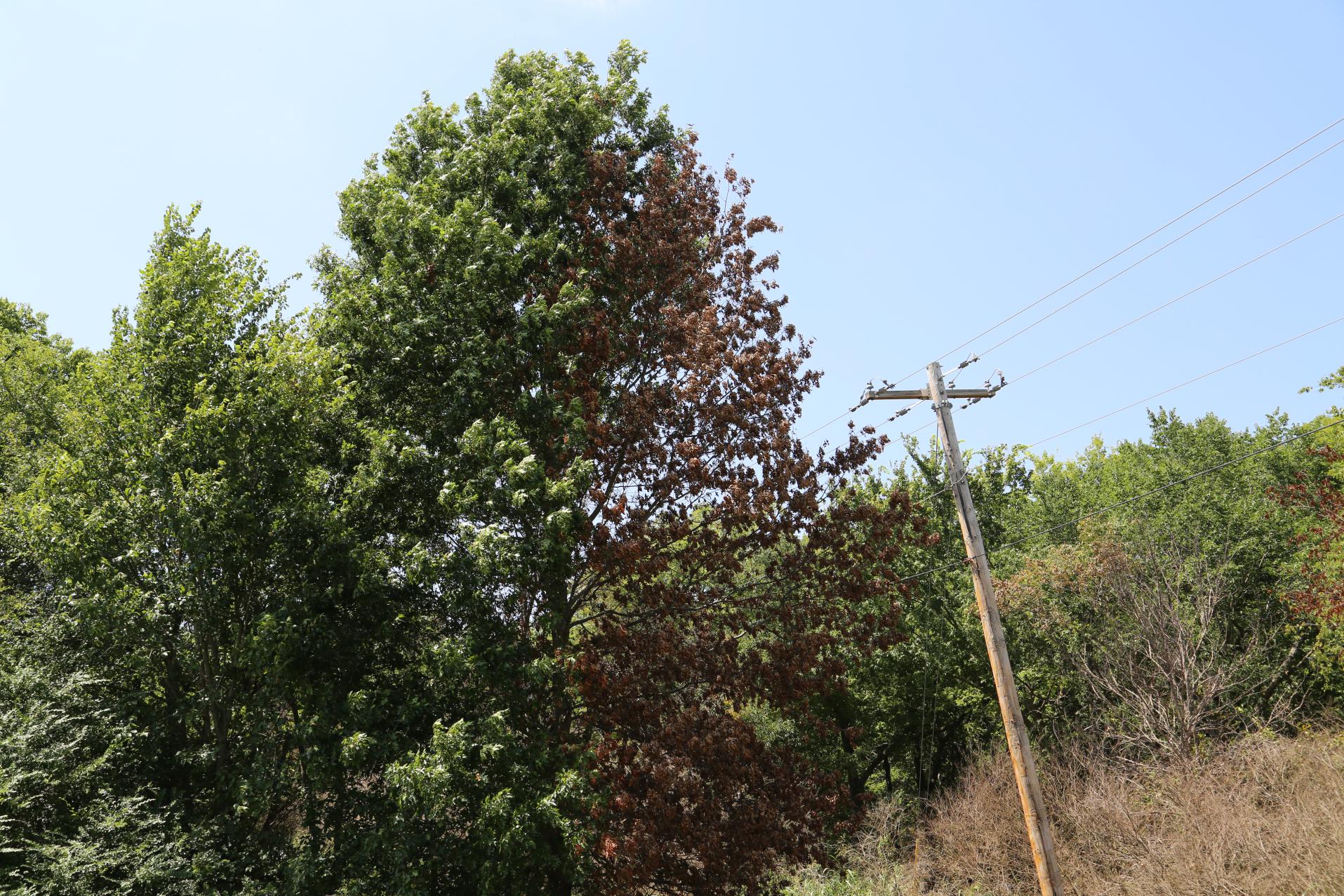Wildfires and utility outages caused by vegetation are on the rise throughout the United States. A recent utility vegetation management survey conducted by CN Utility Consulting and Dr. Richard Hauer of the University of Wisconsin – Stevens Point shows that contacts from 65 U.S.-based utilities reported that 23.2% of distribution outages are caused by vegetation. When trees and other forms of incompatible vegetation interfere with utility infrastructure, wildfires are another unfortunate result. In fact, the California Public Utilities Commission estimates that 1 in every 10 wildfires across the state are actually triggered by power lines.
The issue at hand is not utility infrastructure itself, but the vegetation that poses a threat to interfere with it. Utilities have used mechanical mowing and other underperforming vegetation control strategies to maintain problematic plant species in the past. However, the exclusive use of mechanical mowing can stimulate regrowth, and industry research has shown that it also leads to frequent re-treatment requirements that increase maintenance costs for utilities over time.
To safeguard utility infrastructure from vegetation interference, some utilities have considered burying their power lines. However, such projects cost anywhere from $1 million to $5 million per mile to complete. Considering the hefty price tag for overhauling utility infrastructure, many companies choose to focus their efforts and resources on optimum vegetation management strategies.
Whereas mechanical mowing and trimming practices provide short-term results and ever-rising maintenance costs, Integrated Vegetation Management (IVM) programs featuring selective herbicide applications are able to achieve sustainable results that provide multiple benefits to utility companies, their customers and the environment.
Fewer Service Interruptions
A variety of selective herbicide applications can be used as part of an IVM-based strategy to reduce the risk of power outages caused by vegetation. While chemical side-trimming applications can be used to control specific branches or sides of trees that pose a threat to grow into utility equipment, high-volume foliar applications and spot treatments can be used to control entire trees or brush species. Following these treatments, tree crews can be used to clean up vegetation controlled by herbicide applications that impedes site accessibility or poses a threat to impact utility infrastructure.
Utility vegetation managers also can use dormant-season applications to extend the treatment window and control problematic vegetation throughout the winter, allowing practitioners to catch up or get ahead of each treatment season and maintain long-term control of targeted plants.
 Chemical side-trimming applications only control parts of trees that threaten electrical transmission reliability.
Chemical side-trimming applications only control parts of trees that threaten electrical transmission reliability.
Wildfire Mitigation Support
IVM programs include effective brush control strategies that can help utility vegetation managers overcome drought-like conditions, enhance ignition prevention and optimize fuel source management. In recent years, warmer temperatures, earlier snowmelts and high winds have created an environment in which wildfires thrive. As incompatible vegetation dries out, it becomes increasingly flammable. By using selective herbicide applications to control trees and tall-growing brush, utilities are able to mitigate the risk of utility-caused wildfires and eliminate potential fuel sources that can support their spread.
Promoting the development of low-growing plant communities that consist of grasses, herbs and small shrubs also allows utility vegetation managers to establish fuel breaks throughout utility rights-of-way that provide a landscape from which firefighters can safely and effectively suppress the flames.
Other Environmental Benefits
IVM practices are predicated on controlling incompatible vegetation, but they also protect desirable plant species from off-target control. Whereas mechanical mowing equipment decimates all plants in its path, selective herbicide applications selectively control problematic trees, brush and weed species to complement mowing results and minimize harm to desirable plants. IVM practices support the development of native plant communities and low-growing grasses that represent beneficial habitat for a variety of wildlife species, including endangered pollinators.
In fact, the State Game Lands 33 (SGL 33) research project has provided decades of data that addresses a variety of ecological issues. With the help of industry partners like Corteva Agriscience, SGL 33 has analyzed the impact different control methods have on right-of-way management programs and identified best strategies for enhancing the development of biodiverse wildlife habitat. Using more than 65 years of industry research, SGL 33 has positioned the use of IVM strategies featuring selective herbicides as the go-to solution for utility vegetation management programs.

 Chemical side-trimming applications only control parts of trees that threaten electrical transmission reliability.
Chemical side-trimming applications only control parts of trees that threaten electrical transmission reliability.
